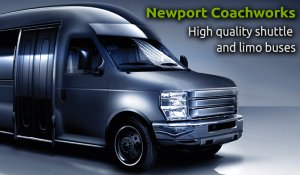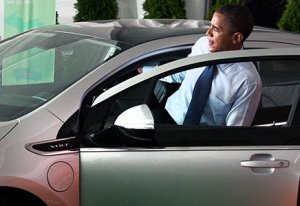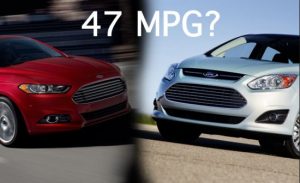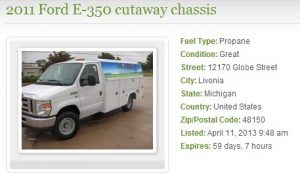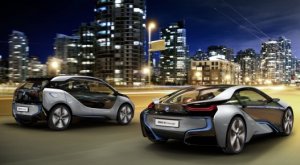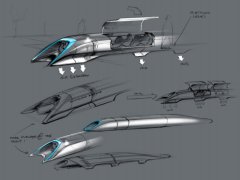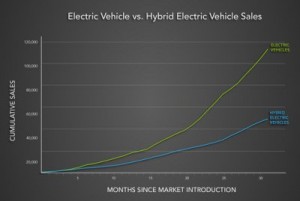 Well it was certainly a busy week for alternative technology vehicles – and that’s saying a lot given that it’s unofficially Vacation Time here in the USA. So here’s a list of the most interesting stories of the past week….
Well it was certainly a busy week for alternative technology vehicles – and that’s saying a lot given that it’s unofficially Vacation Time here in the USA. So here’s a list of the most interesting stories of the past week….
- The Ports of Long Beach and Los Angeles were proud to announce some big numbers…. Long Beach has cut diesel particulates by 81% and sulfur oxides 88% since 2005. The port has also reduced nitrogen oxides by 54% and other greenhouse gases by 24% since 2005. Reasons mentioned in the report for emissions reductions include bigger ships carrying cargo more efficiently, newer ships with cleaner engines, implementation of the Clean Trucks Program, increasing use of shore power, and a new low-sulfur fuel rule for ships, according to its Emissions Inventory report.
- Port of Los Angeles just put out a similar report – the 2012 Inventory of Air Emissions. LA saw a 79% drop in diesel particulate matter since 2005. Moving cargo volume fluctuations from the equation showed the number was closer to 81% in reductions. The LA port saw a huge drop in sulfur oxides emissions (SOx) throughout the South Coast Air Basin. In this report, 6% of all SOx came from the Port of Los Angeles – way down from 25% in 2005. Nitrogen oxides also saw a big drop during the past seven years. The port has implemented several clean-air measures, requirements, and incentives to reach these targets. All transportation modes are included – ships, trucks, trains, cargo-handling equipment, and small harbor aircraft.
- NHTSA is tweaked that Tesla claims it received the highest crash-test safety record ever for its Model S. It got great ratings – five stars in each category, but it didn’t really get a 5.4 overall score like it claims, NHTSA said. Tesla used the mathematical formula that NHTSA cites to come up with its own 5.4 rating. NHTSA doesn’t even rate vehicles beyond five stars and doesn’t rank them against other vehicles, the agency said. (Editor’s Note: Wrong or right, Tesla did gain a lot of publicity when it issued its press release on gaining the best five-star safety record ever. I sure fell for it!)
- In other Tesla news, the EV maker’s plans to enter the China market have stalled out for now. There’s a dispute over a trademark that Tesla needs to enter the market and set up a flagship showroom in Beijing. A businessman in China is claiming the trademark rights to the name.
- And….. Tesla hit $173 and then closed at $164.23 in stock price yesterday – that’s market value in excess of $20 billion for part of the day.
- Tesla competitor BMW is rolling out another plug-in concept next month at the Frankfurt Auto Show. The BMW Concept5 X5 eDrive plug-in hybrid is based on the BMW X5 SAV. It will be powered by a four-cylinder TwinPower turbocharged gasoline engine in tandem with a 70 kilowatt electric motor and a lithium-ion battery pack. The X5 eDrive will join the BMW i3 and i8 plug-ins in Frankfurt.
- California Energy Commission is seeking proposals for $4.7 million available in awards – three awards up to a little over $1.5 million each to be distributed among three regions – Northern, Central, and Southern California. The funds will support new or existing centers for alternative fuels and advanced vehicle technology. Winners of the awards will support a neutral site for companies to collaborate on technology demonstrations, with fleet managers expected to play a big role. In other government funding news, the new US Secretary of Energy, Ernest Moniz, said the feds may revive the $25 billion Advanced Technology Vehicle Manufacturing Program. That program has been on hold since March 2011 after two of the five companies that had received loans halted production. The DOE is looking at revising the loan solicitation process.
- Detroit Electric is sputtering in its manufacturing plans as the company that revived the historic EV brand has to yet to make an agreement for a plant in Wayne County, Mich. There was going to be a facility in Plymouth to make its electric sports car, but that’s failed to come together.
- Mercedes-Benz ordered 123 more hydrogen-based GenDrive fuel cell units to run forklifts at its logistics center under construction in Tuscaloosa, Ala. Last month, Mercedes bought 72 of these fuel cell lifts for its Tuscaloosa vehicle assembly plant.
- While some scoff at the term “clean diesel,” others would disagree. RL Polk & Co. says the US sales figures have gone up 25% between 2010 and 2012 and the number of these diesel-powered light-duty vehicle models will be going up from 27 models now to more than 55 in the next two years. Why is the momentum building for diesel passenger vehicles? Three main reasons: lots of appealing products to choose from; diesel engines are 20% to 40% more fuel efficient than comparable gasoline engines; who cares of diesel is pricier than gasoline? Automakers like them for the 54.5 mpg by 2025 fuel standard mandate and consumers have more confidence in them now. The Volkswagen Golf TDI and Jetta TDI impressed a lot of people as high performance and fuel efficient, and led the way in diesel adoption.
- Google poised to profit from self-driving cars: Mega-automotive supplier Continental AG is now in alliance with Google and IBM to build autonomous driving systems for cars. Continental has a similar deal with Cisco Systems for automated/driverless cars and data transfer between automobiles. Google has been in this game since 2010, providing test results from California highways and played an important role in the state of Nevada doing its homework and becoming the first state to adopt a self-driving car testing program.
- EVCARCO Inc.., an up-and-coming dealer network offering green vehicles, has launched its EV Leasing Program. The company wants to support increase in demand in the US for new and pre-owned electric and hybrid vehicles available now in the US. CEO Walter Speck said the EVCARCO has submitted licensing to solicit consumers to enter into a lease of new or pre-owned models, which include the Chevy Colt, Nissan Leaf, Teslas, BMWs, Toyotas, and other alternative fuel vehicles.

